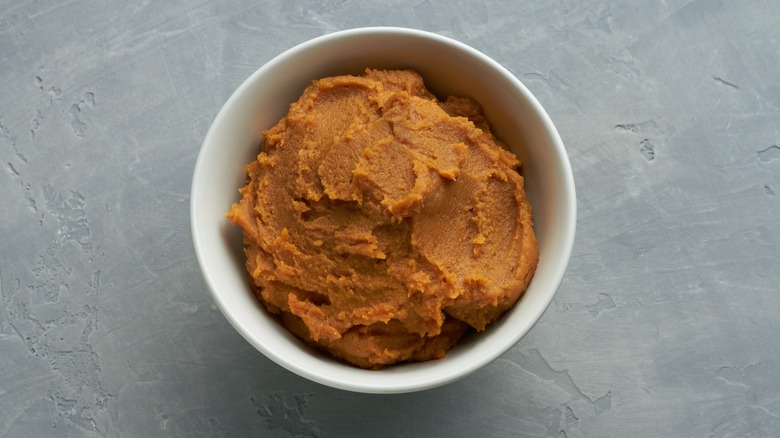The Mistake You've Been Making With Miso Soup
Earthy, salty, and cloudy, miso soup is often found on tables alongside nigiri, sushi rolls, and other Japanese favorites. With a fullness of body and an umami-y aroma, miso is both delicious and nutritionally dense. What many may not know about this fermented paste is that it is in fact alive — as are many fermented foods rich in probiotics.
Miso is made from a special Japanese fungus called koji, which is a type of Aspergillus oryzae. Also known as the national mold of Japan, koji is used to make other iconic staples of Japanese cuisine such as sake, mirin, and soy sauce. There is no shortage of complex flavors brought out by this mold, which can add sweetness, tang, and umami to all types of dishes.
As health-conscious individuals begin to incorporate more probiotics into their diets, they'll find that the ever-so-familiar miso soup is a great option. However, when preparing miso soup, there's one thing you should never do.
Don't boil your miso soup
Boiling is by far the most common mistake people make when they're making miso soup, as the high heat destroys most of its key health benefits. As mentioned before, miso paste is a fermented soybean paste that contains live koji cultures of beneficial gut bacteria. The presence of live bacteria means you must be careful when applying heat to miso. In fact, the beneficial koji starts to degrade at 100 degrees Fahrenheit. As result, adding miso to a pot of boiling water and letting the paste dissolve will significantly reduce any probiotic cultures in the paste.
Instead, when miso paste is added to hot water or stock, it should be whisked in gently once the water is taken off the heat. Sora News even suggests that you ladle hot water into a bowl with 2.5 tablespoons of miso, letting the paste slowly meld with the liquid. What occurs during a proper miso soup preparation is something like emulsification. The miso's thickness — along with its tangy, salty, and earthy aroma — remains intact. This method of preparing miso soup also allows the miso paste to slowly heat up and dissolve without losing any of its nutritional benefits.
Another reason not to boil miso soup? You can ensure the tofu remains silky and tender (it toughens as it boils), and the seaweed stays plump instead of coarse. So do yourself a favor: treat miso as a delicate, living paste of wondrous flavors and health benefits.

